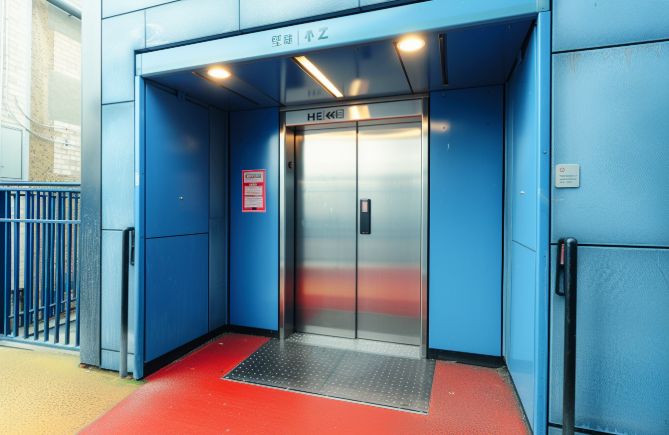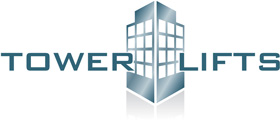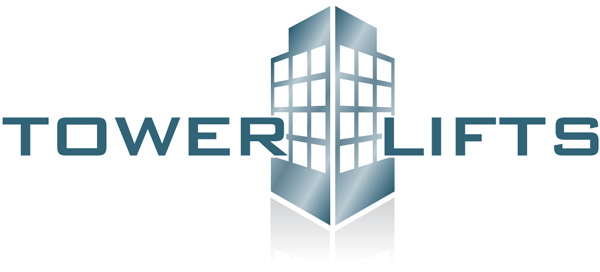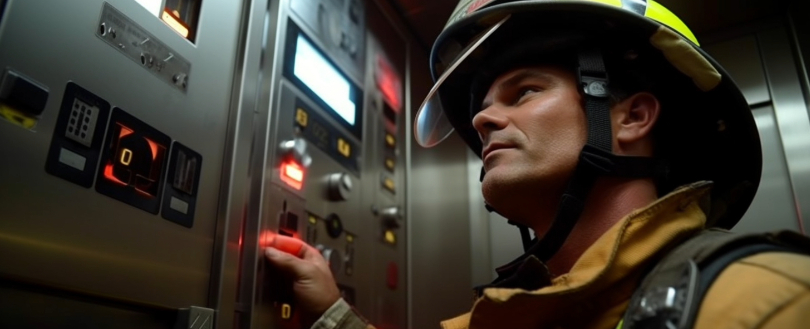Fire Evacuation Lifts
Why Fire Evacuation Lifts are Critical for Your Building
Everyone in a building deserves a safe and efficient escape route during an emergencies such as a fires. That’s why it’s so important for buildings to design and regularly practice their evacuation procedures. A key part of this planning is making sure everyone can exit the building quickly, without dangerous crowding in hallways or stairwells. Fire evacuation lifts are a vital part of this safety planning.
Tower Lifts has been a trusted provider of emergency lifts over the past two decades. We specialise in installing both firefighters’ lifts and evacuation lifts. In this article, we’ll explain what fire evacuation lifts are, why they matter, and how they’re different from firefighters’ lifts.
Understanding the Differences – Evacuation Lifts, Firefighter Lifts, and Passenger Lifts
It’s important to understand the key distinctions between these lift types to make the right choice for your building’s safety needs:
Ordinary Passenger Lift
These are the lifts we use daily. In the event of a fire, they are generally not designed for use. Building regulations usually require passenger lifts to shut down and return to the ground floor when a fire alarm is triggered.
Firefighter Lift
These are heavy-duty lifts with specific safety features designed for use by the fire and rescue services during a fire. They have backup power supplies and are built to withstand extreme heat and water. Firefighter lifts give firefighters rapid access to upper floors to help contain and extinguish fires more efficiently.
Evacuation Lift
Designed to help people with disabilities or limited mobility safely evacuate a building during a fire or other emergency. Unlike ordinary lifts, evacuation lifts have alternate power supplies to ensure they remain operational even during a fire. An evacuation lift can greatly enhance the safety and efficiency of emergency evacuations.
Building regulations and guidance, such as BS 9999:2017 and the London Plan Policy D5 set specific requirements for fire evacuation lifts and firefighter lifts in certain types of buildings. Tower Lifts can advise on the specific regulations that apply to your building and design the right lift solution.
Which Buildings Require Fire Evacuation Lifts?
There isn’t a single, universal rule for when evacuation lifts are mandatory in the UK. Requirements can vary slightly based on local regulations, and the specifics of your building’s design and use. However, some general guidelines include:

- Residential Buildings – New residential buildings above a certain height (usually 18 metres) are required to have at least one evacuation lift per building core. The London Plan has particularly strong guidance on this point.
- Commercial and Public Buildings – Buildings with high occupancy, complex layouts, or where many occupants may have limited mobility benefit hugely from evacuation lifts. This could include hospitals, care homes, schools, large offices, and similar structures.
- Retrofitting Existing Buildings – While not always mandatory, there’s growing emphasis on improving accessibility and evacuation safety in existing buildings. Retrofitting an evacuation lift might be highly recommended or required depending on circumstances.
Tower Lifts understands the complexities of fire safety regulations and can help you determine if an evacuation lift is needed for your building. We’ll design a solution that fully complies with current standards and ensures the safety of all occupants.
Standards for Fire Evacuation Lifts – Ensuring Safety and Functionality
Evacuation lifts in the UK must adhere to a range of standards to guarantee their reliability and effectiveness during emergencies:
• BS 9999:2017: Code of Practice for Fire Safety in the Design, Management and Use of Buildings – This sets out the broader principles for fire safety and evacuation, including guidance on evacuation lifts.
• BS 9991:2015: Fire Safety in the Design, Management and Use of Residential Buildings – Code of practice – Specifically addresses fire safety in residential buildings and may include recommendations for evacuation lifts.
• BS EN 81-76:2018: Safety rules for the construction and installation of lifts – Particular applications for passenger and goods passenger lifts – Evacuation lifts – This standard outlines specific technical requirements for evacuation lifts, ensuring elements like:
- Protection from fire and water ingress
- Fire-resistant construction
- Emergency communications systems
- Alternate power sources
- Integration with fire alarm systems
• Building Regulations Approved Document B (Fire Safety) – Provides detailed fire safety guidance, including potential requirements for evacuation lifts in certain buildings.
• The Equality Act 2010 and Building Regulations Approved Document M – These lay out accessibility requirements to ensure the lift car and controls accommodate people with disabilities.
Important Considerations:
- Local Regulations – Always check with your local Building Control Body for specific requirements that may apply in your area.
- Updates – Standards evolve over time. It’s essential to work with specialists like Tower Lifts who stay up to date on the latest regulations.
Can I Upgrade an Existing Lift for Evacuation?
Yes, sometimes existing passenger lifts can be upgraded to meet evacuation lift standards. This can be used as a strategy for improving safety in buildings, especially in older high-rise structures.
Guidance and Considerations
BS 8899:2016 (Improvement of Firefighting and Evacuation Provisions in Existing Lifts – Code of Practice) is the key guidance document for this process. Successful upgrades consider:
- Building Design and Fire Safety: How the lift integrates with the building’s overall fire protection systems (refuges, fire resistance, etc.).
- Occupant Needs: The number and mobility levels of those who might rely on the lift for evacuation.
- Evacuation Plans: How using the lift aligns with emergency procedures and staff training.
- Additional Precautions: What other fire safety measures (sprinklers, improved signage, etc.) would complement the lift upgrade.
Is My Lift Suitable?
A thorough on-site assessment by experienced lift engineers is crucial. They’ll evaluate factors like:
- Secondary Power: Can a reliable alternate power source be installed to keep the lift running in a fire?
- Structural Integrity: Can the lift shaft and lobby areas be upgraded to meet fire resistance standards?
- Compliance: Does the lift meet the size, communications, and control requirements of modern evacuation lift standards?
Tower Lifts has the expertise to help you assess the viability of an upgrade and design a solution that maximises safety and cost-effectiveness for your building.
Passenger Safety Is Our Business Every Day
Passenger safety isn’t just our top priority – it’s our guiding principle. That’s why our lift installers are highly skilled professionals with the experience to ensure every installation puts safety first. As an ISO9001:2008 Lift Cert and UKAS approved company, we rigorously adhere to all current Lift Regulations. This unwavering commitment to quality means you can trust our lifts to perform flawlessly, especially when they matter most.
 Tower Lifts
Tower Lifts
 Tower Lifts
Tower Lifts
